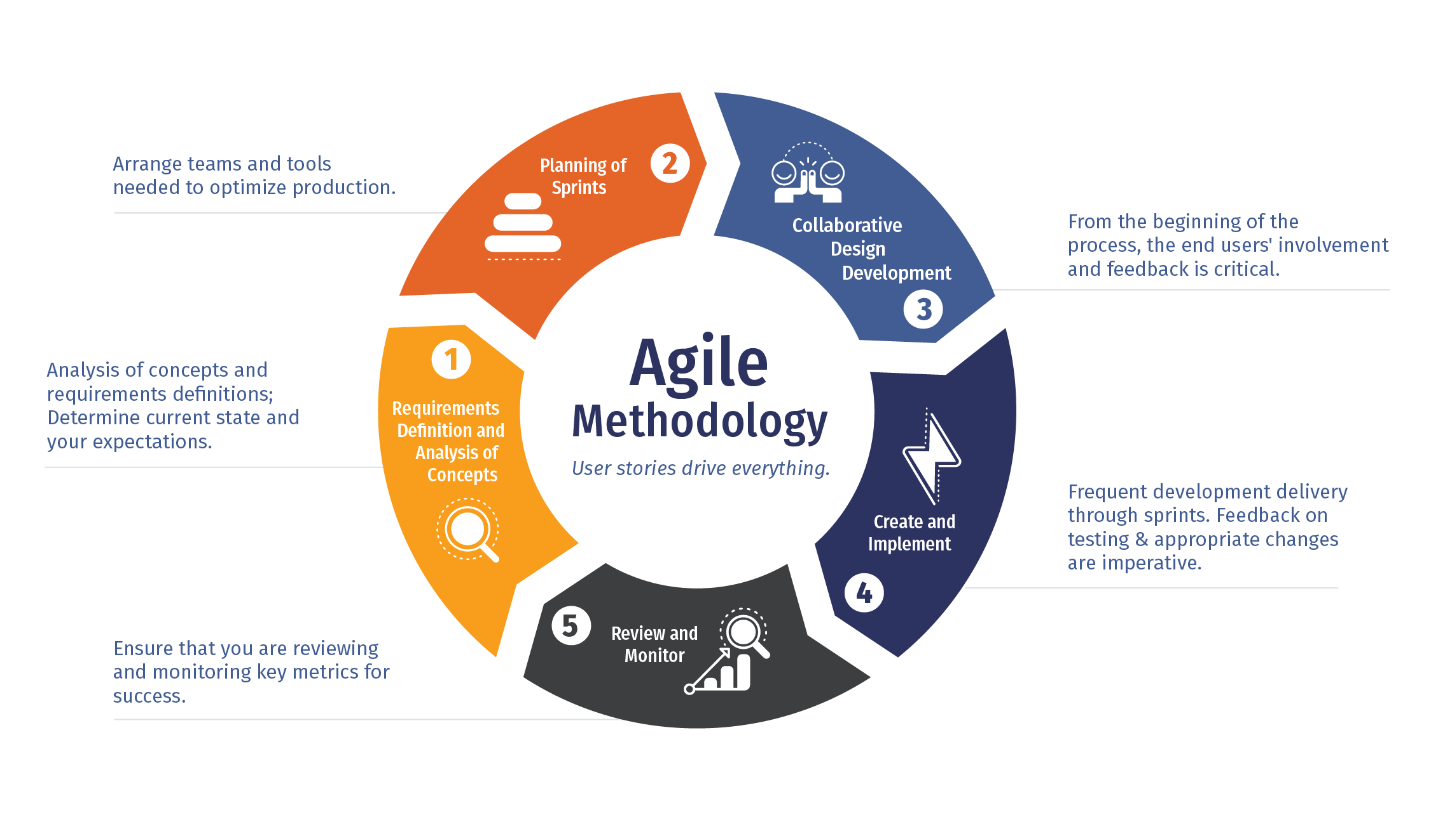Everything you need to know about DevOps
 Kelvin Parmar
Kelvin Parmar
Are you curious about DevOps practices and principles? As software development and deployment become more complex, DevOps has emerged as a game-changing approach to streamline processes and increase efficiency. In this comprehensive guide, we'll cover everything you need to know about DevOps, from its definition to its benefits, tools, and best practices. Whether you're a beginner or an experienced developer, this guide will provide valuable insights and practical tips to help you adopt and implement DevOps in your organization.
In today's fast-paced, technology-driven world, it's more important than ever for organizations to be able to quickly and reliably develop and deploy software. This is where DevOps comes in.
DevOps is a software engineering culture and practice that aims to unify development (Dev) and operations (Ops). It seeks to shorten the time it takes to develop and deploy software by enabling better collaboration between these two traditionally separate teams.
In this blog, we'll explore the principles of DevOps, the tools and practices used to implement it, and the benefits it can bring to organizations. Whether you're new to DevOps or an experienced practitioner, we hope you'll find something of value in this blog.

What is DevOps?
DevOps is a set of practices that aims to improve the collaboration and communication between software developers and IT operations. It emphasizes the use of automation and continuous delivery to improve the efficiency of the software development and deployment process.
Definition of DevOps: DevOps is a set of practices that aims to improve the collaboration and communication between software developers and IT operations. It emphasizes the use of automation and continuous delivery to improve the efficiency of the software development and deployment process.
The goal of DevOps is to enable organizations to deliver software and other IT-based products and services more quickly, with fewer errors and at a lower cost. It aims to bridge the gap between development and operations by fostering a culture of collaboration and communication, and by using tools and processes that enable the rapid and reliable delivery of software.
Some key practices in DevOps include continuous integration, continuous delivery, and infrastructure as code. These practices help to automate the software development and deployment process, making it more efficient and reliable. There are also many tools available to help organizations implement DevOps practices, including version control systems, automation tools, and monitoring tools.
Challenges before DevOps
Cultural challenges :
One of the main challenges in implementing DevOps is the cultural shift that it requires. DevOps emphasizes collaboration and communication between teams, which can be difficult to achieve in environments where there is a strong separation between development and operations.
Integration of new tools and processes:
Implementing DevOps often requires the use of new tools and processes, which can be challenging for organizations that are used to traditional approaches. This may require training and support for team members to learn and adapt to these new practices.
Managing complexity:
DevOps emphasizes the use of automation and continuous delivery, which can lead to a more rapidly changing environment. This can be challenging for organizations to manage, particularly in terms of ensuring the stability and reliability of systems.
Resistance to change:
Change can be difficult for any organization, and implementing DevOps can require significant changes to the way that an organization operates. This can lead to resistance from team members who may be resistant to adopting new tools and processes.
Lack of understanding:
In some cases, there may be a lack of understanding among team members about the benefits of DevOps and how it can improve the efficiency and effectiveness of the software development and deployment process. This can make it more difficult to convince team members to adopt new practices and tools.
Before DevOps which model is used?
Before the adoption of DevOps, the traditional model of software development and deployment was known as the "waterfall" model. In this model, software development was typically divided into distinct phases, with each phase being completed before moving on to the next. This included phases such as requirements gathering, design, development, testing, and deployment.
One of the main drawbacks of the waterfall model was that it tended to be slow and inflexible. Because each phase had to be completed before moving on to the next, it was difficult to respond to changing requirements or incorporate feedback from users. Additionally, there was often a lack of collaboration and communication between the development and operations teams, leading to a disconnect between the two groups.
In contrast, DevOps emphasizes the use of automation and continuous delivery to improve the efficiency of the software development and deployment process. It also places a strong emphasis on collaboration and communication between teams, which helps to improve the overall effectiveness of the process. As a result, many organizations have adopted DevOps practices as a way to improve the efficiency and effectiveness of their software development and deployment processes.
Waterfall model
The waterfall model is a traditional model of software development that emphasizes a linear and sequential approach to the development process. In this model, software development is typically divided into distinct phases, with each phase being completed before moving on to the next. These phases may include requirements gathering, design, development, testing, and deployment.
The main advantage of the waterfall model is that it is relatively simple and easy to understand, making it well-suited to small projects with well-defined requirements. However, it has several drawbacks that make it less suitable for larger or more complex projects.
One of the main drawbacks of the waterfall model is that it is inflexible and does not allow for much iteration or change once a phase has been completed. This means that it can be difficult to incorporate feedback or respond to changing requirements as the project progresses. Additionally, because each phase must be completed before moving on to the next, the waterfall model can be slow and may not be well-suited to fast-paced or rapidly changing environments.

Here is a simple graphical representation of the waterfall model:
Requirements gathering:
In this phase, the requirements for the software are gathered and documented. This may include interviews with stakeholders, workshops, and other techniques to understand the needs and goals of the project.
Design:
In this phase, the software design is created. This may include the development of technical specifications and the creation of diagrams and other design artefacts.
Development:
In this phase, the software is developed. This may include coding, testing, and debugging.
Testing:
In this phase, the software is tested to ensure that it meets the requirements and functions as intended. This may include unit testing, integration testing, and user acceptance testing.
Deployment:
In this phase, the software is deployed to production environments and made available to users.
Agile model
The agile model is a software development approach that emphasizes flexibility, collaboration, and rapid iteration. It is designed to allow teams to respond quickly to changing requirements or market conditions, and to deliver software and other IT-based products and services iteratively and incrementally.
In the agile model, software development is divided into small, iterative cycles called "sprints," during which a specific set of features or functionality is developed and delivered. Sprints typically last one to four weeks, and at the end of each sprint, the team reviews and reflect on their progress and adjust their plans for future sprints as needed.
One of the key principles of the agile model is the concept of "continuous delivery," which involves delivering small increments of software frequently, rather than waiting to deliver a complete product all at once. This allows teams to get feedback from users more quickly and to iterate on their product based on that feedback.
Some common agile methodologies include Scrum, Lean, and Extreme Programming (XP). Each of these methodologies has its specific practices and approaches, but they all share a common focus on flexibility, collaboration, and rapid iteration.

Here is a simple graphical representation of the agile model:
Requirements gathering:
In this phase, the requirements for the software are gathered and documented. This may include interviews with stakeholders, workshops, and other techniques to understand the needs and goals of the project.
Sprint planning:
At the beginning of each sprint, the team plans out the work that they will complete during that sprint. This may include breaking down the work into smaller tasks, estimating the effort required for each task, and prioritizing tasks based on the value they will deliver.
Development:
During each sprint, the team works on developing the software, using techniques such as pair programming, continuous integration, and test-driven development.
Review and reflection:
At the end of each sprint, the team reviews the work they have completed and reflects on their progress. They may also gather feedback from stakeholders and adjust their plans for future sprints as needed.
Deployment :
As the team completes each sprint, they may deploy the software to production environments, or they may wait until a set of sprints have been completed before deploying the software. The decision to deploy will depend on the specific needs and goals of the project.
In the agile model, the development process is iterative and incremental, with the team delivering small increments of software frequently. This allows them to respond quickly to changing requirements or market conditions, and to gather feedback from users throughout the development process.
Benefits of DevOps
There are many benefits of implementing DevOps practices in an organization, including:
Faster delivery of software:
DevOps emphasizes the use of automation and continuous delivery to improve the efficiency of the software development and deployment process. This can help organizations to deliver software and other IT-based products and services more quickly.
Increased reliability and stability of systems:
By using tools and practices such as continuous integration and infrastructure as code, organizations can improve the reliability and stability of their systems. This can help to reduce downtime and improve the overall quality of the software and services they deliver.
Improved collaboration and communication:
DevOps emphasizes the importance of collaboration and communication between teams, which can help to improve the overall effectiveness of the development and deployment process. This can lead to better teamwork and more efficient problem-solving.
Greater agility and flexibility:
DevOps enables organizations to respond more quickly to changing requirements or market conditions, as it allows for more rapid iteration and delivery of software. This can help organizations to be more agile and flexible in their approach to software development and deployment.
Cost savings:
By improving the efficiency of the software development and deployment process, organizations can reduce the time and resources required to deliver software and other IT-based products and services. This can help to reduce costs and improve the overall profitability of the organization.
Key practices in DevOps
Several key practices are important in DevOps, including:
Continuous integration (CI):
CI is the practice of merging code changes from multiple developers into a single codebase frequently, typically several times a day. This allows teams to detect and resolve conflicts early on, and to ensure that the codebase remains stable and reliable.
Continuous delivery (CD):
CD is the practice of automatically building, testing, and releasing code changes to production environments. This allows organizations to deliver software and other IT-based products and services more quickly and reliably, with minimal manual intervention.
Infrastructure as code (IaC):
IaC is the practice of managing infrastructure (e.g., servers, networks, etc.) using code, rather than manual configuration. This allows organizations to automate the provisioning and configuration of infrastructure, making it more efficient and reliable.
Monitoring:
Monitoring is the practice of collecting and analyzing data about the performance and usage of systems to identify and resolve issues. This is an important aspect of DevOps, as it helps organizations ensure the reliability and stability of their systems.
Collaboration and communication:
DevOps emphasizes the importance of collaboration and communication between teams, which can help to improve the overall effectiveness of the development and deployment process. This may involve using tools such as agile methodologies, chat apps, and issue-tracking systems to facilitate communication and collaboration.
DevOps tools
There are many tools available to help organizations implement DevOps practices, including:
Version control systems:
Version control systems, such as Git, allow teams to track and manage changes to their codebase. They are particularly important in the context of continuous integration, as they allow teams to merge code changes from multiple developers and to track the history of those changes.
Automation tools:
Automation tools, such as Jenkins, allow organizations to automate various aspects of the software development and deployment process, including building, testing, and releasing code.
Containerization tools:
Containerization tools, such as Docker, allow organizations to package their applications and their dependencies into lightweight containers, which can be easily deployed to various environments. This can help to improve the portability and scalability of applications.
Monitoring tools:
Monitoring tools, such as Nagios and Prometheus, allow organizations to collect and analyze data about the performance and usage of their systems to identify and resolve issues.
Collaboration and communication tools:
Tools such as agile project management software, chat apps, and issue-tracking systems can help teams to collaborate and communicate more effectively, improving the overall effectiveness of the development and deployment process.
Challenges in implementing DevOps
There are several challenges that organizations may face when trying to implement DevOps practices, including:
Cultural challenges:
One of the main challenges in implementing DevOps is the cultural shift that it requires. DevOps emphasizes collaboration and communication between teams, which can be difficult to achieve in environments where there is a strong separation between development and operations.
Integration of new tools and processes:
Implementing DevOps often requires the use of new tools and processes, which can be challenging for organizations that are used to traditional approaches. This may require training and support for team members to learn and adapt to these new practices.
Managing complexity:
DevOps emphasizes the use of automation and continuous delivery, which can lead to a more rapidly changing environment. This can be challenging for organizations to manage, particularly in terms of ensuring the stability and reliability of systems.
Resistance to change:
Change can be difficult for any organization, and implementing DevOps can require significant changes to the way that an organization operates. This can lead to resistance from team members who may be resistant to adopting new tools and processes.
Lack of understanding:
In some cases, there may be a lack of understanding among team members about the benefits of DevOps and how it can improve the efficiency and effectiveness of the software development and deployment process. This can make it more difficult to convince team members to adopt new practices and tools.
Best practices for implementing DevOps
There are several best practices that organizations can follow when implementing DevOps to increase the chances of success:
Build a cross-functional team:
DevOps requires collaboration and communication between teams, so it is important to build a cross-functional team that includes members from both development and operations. This can help to ensure that all necessary perspectives are considered as new practices and tools are implemented.
Establish clear communication and collaboration processes:
Setting up clear communication and collaboration processes can help to ensure that team members can work together effectively. This may involve using tools such as agile project management software, chat apps, and issue-tracking systems.
Automate as much as possible:
Automation is a key aspect of DevOps, so it is important to automate as much of the software development and deployment process as possible. This may involve using tools such as Jenkins and Docker to automate tasks such as building, testing, and releasing code.
Continuously measure and improve:
DevOps is an iterative process, so it is important to continuously measure and improve upon the efficiency and effectiveness of the process. This may involve gathering feedback from team members, analyzing data about the performance and usage of systems, and making adjustments as needed.
Provide training and support:
Implementing DevOps may require team members to learn and adapt to new tools and processes. It is important to provide training and support to ensure that team members can effectively use these new practices.
Conclusion
In conclusion, DevOps is a software engineering culture and practice that helps organizations to quickly and reliably develop and deploy software. By promoting better collaboration between development and operations teams, automating the build, test, and deployment process, and emphasizing continuous delivery and deployment, DevOps can help organizations to stay competitive in today's fast-paced, technology-driven world.
Whether you're new to DevOps or an experienced practitioner, we hope this blog has provided you with a better understanding of the principles, tools, and practices used in DevOps. By adopting a DevOps approach, organizations can release software faster, improve collaboration between teams, and increase the reliability and uptime of their systems
Thank you for reading, and we hope you'll continue to follow our blog for more insights and information on DevOps. Kelvinparmar
#DevOps
Subscribe to my newsletter
Read articles from Kelvin Parmar directly inside your inbox. Subscribe to the newsletter, and don't miss out.
Written by

Kelvin Parmar
Kelvin Parmar
I am B.tech Graduate who is Passionate about Tech and Open Source. Programmer with a good sense of design. Learning and sharing in Public and helping the tech communities. I write about my experiences, tech and tools. Educating and Helping people get into Tech and Open Source through my Content.